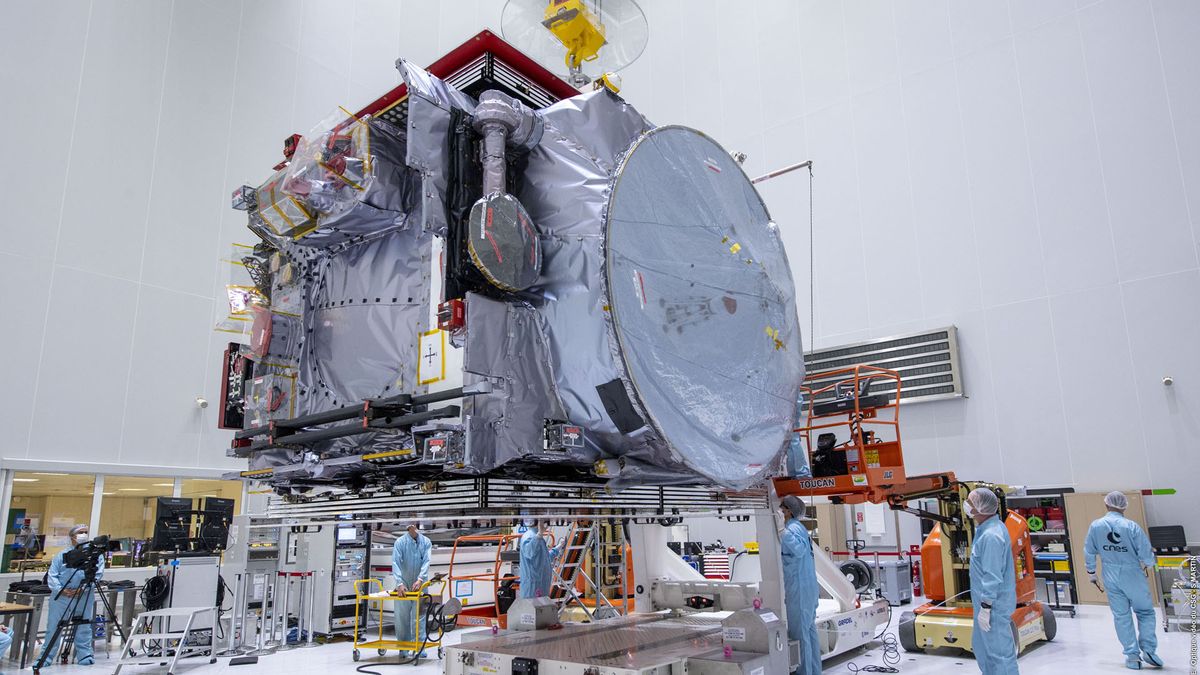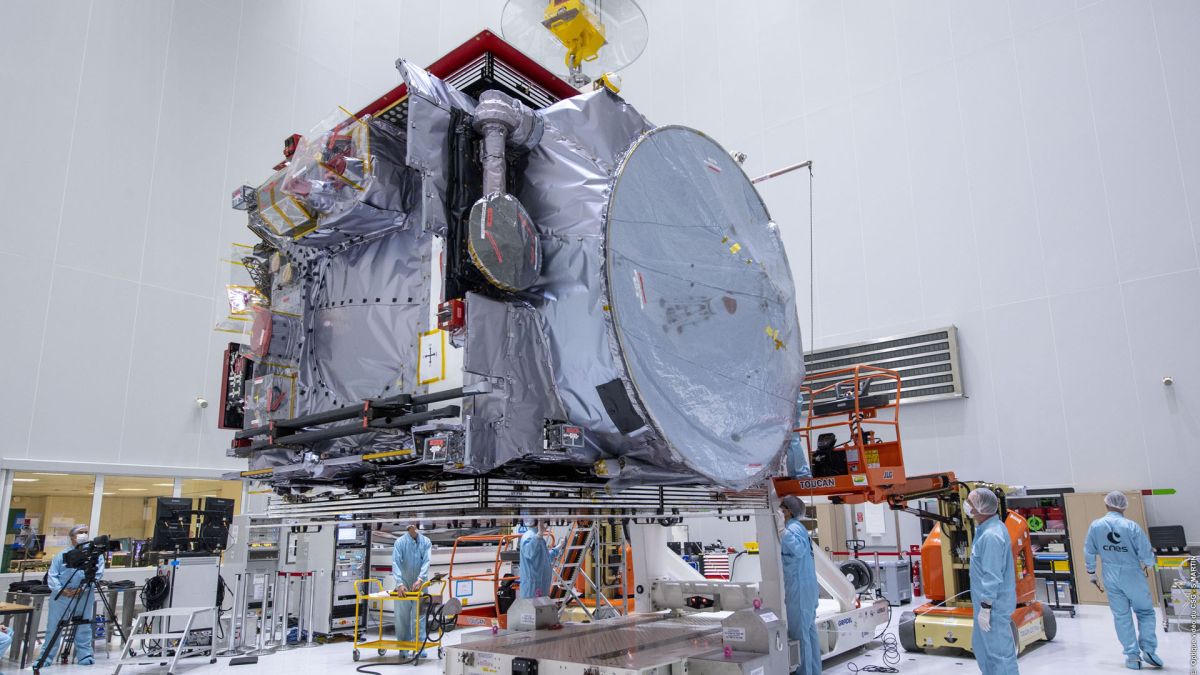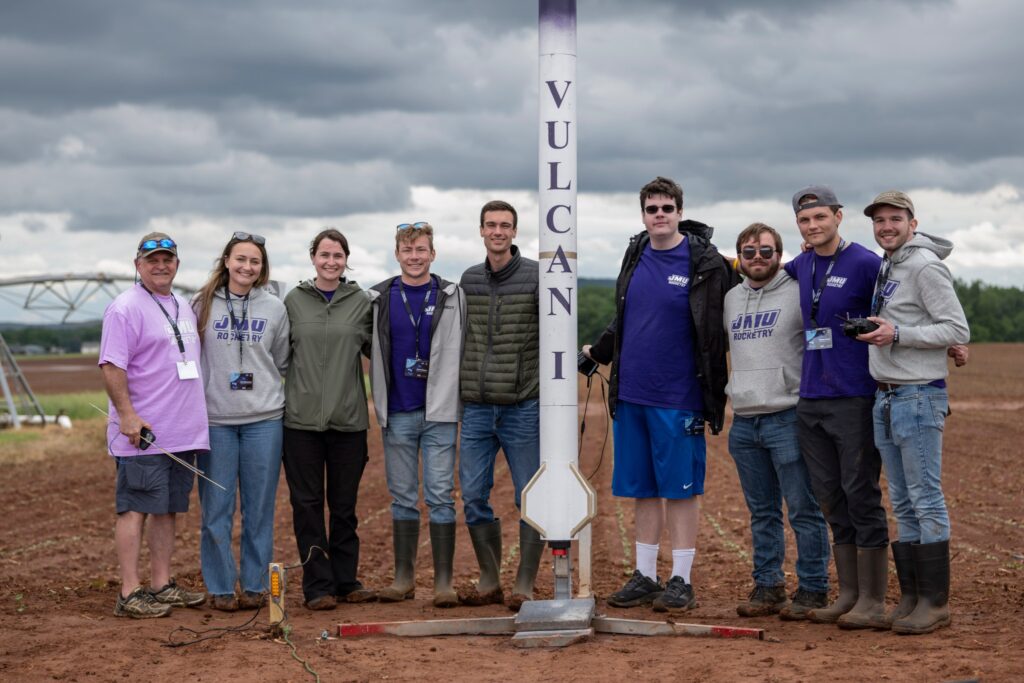
Europe’s first Jupiter-bound mission is in the final stages of preparations for its launch on April 13 from the European spaceport in Kourou, French Guiana.
Functional tests and a countdown rehearsal have been successfully completed ahead of the launch of the Jupiter Icy Moons Explorer, or JUICE, and teams are getting ready to fuel the spacecraft as well as its carrier rocket, the European Space Agency (ESA), which manages the mission, said in a series of tweets on Friday (opens in new tab) (March 10) and Saturday (opens in new tab) (March 11).
“With just five weeks to go, preparations for launch are ramping up here at @EuropeSpacePort. Soon enough #ESAJuice will be sealed inside its protective fairing and mounted atop this mighty @Ariane5,” ESA tweeted with a series of images from the rocket integration building. “Seeing the rocket taking shape, it’s starting to feel real.”
Related: Europe’s flagship JUICE mission will study the Jupiter moons Europa, Callisto and Ganymede.
JUICE will be lofted into space for its eight-year voyage through the solar system by the European heavy-lift Ariane 5 rocket. The mission is Europe’s first individual attempt to explore bodies in the outer solar system and will represent the penultimate liftoff for the workhorse Ariane 5, which has served the European space industry since 1996.
“We are truly on the home straight now,” European aerospace giant Airbus, which led the consortium that built the spacecraft, wrote in an emailed statement released on March 7. “JUICE was shipped from the Airbus production site in Toulouse, France to South America, where it is now undergoing final preparations by our engineers before launch on 13 April by an Ariane 5 rocket from French Guiana.”
If all goes well, the 6.6-ton (6 metric tons) spacecraft will arrive at Jupiter in 2031 and will then embark on a complex tour around the planet and three of its main moons: Ganymede, Europa and Callisto. JUICE will become the first spacecraft ever to orbit a moon other than Earth’s own in 2035, when it shifts from the orbit of Jupiter to that of its largest moon Ganymede.
Equipped with a set of 10 cutting-edge science instruments, JUICE will allow scientists to study the moons, including their interior, like never before. The mission is expected to make major contributions to our understanding of whether life could exist on those ice-covered, ocean-harboring bodies.
Related stories:
JUICE will arrive at Jupiter a few years after the end of NASA’s Juno mission, which is expected to take place in 2025. However, another NASA mission, Europe Clipper, set to launch next year, will arrive at the Jupiter system ahead of JUICE to study the icy ocean moon Europa, which astrobiologists regard as one of the solar system’s best bets to host alien life.
The European Space Agency, which manages the mission, previously collaborated with NASA on the Cassini-Huygens mission to Saturn.
Follow Tereza Pultarova on Twitter @TerezaPultarova (opens in new tab). Follow us on Twitter @Spacedotcom (opens in new tab) and on Facebook (opens in new tab).



